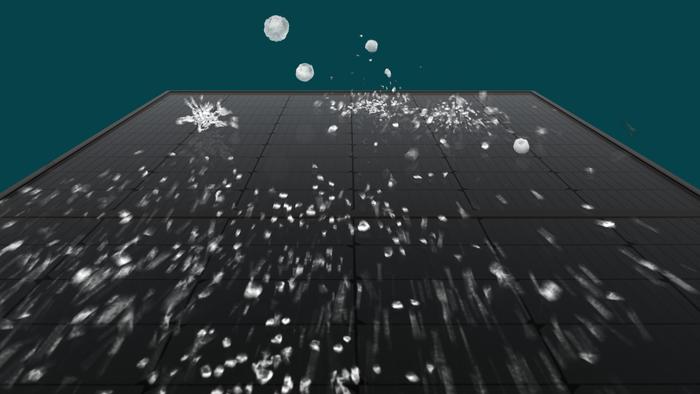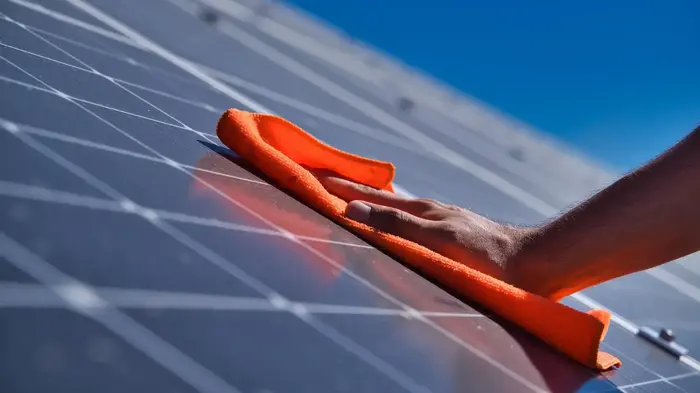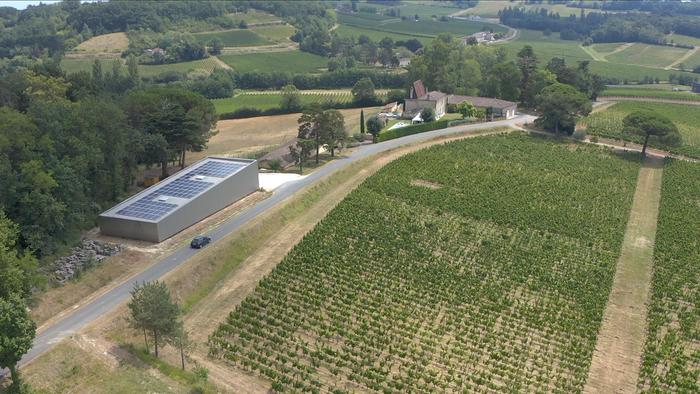Photovoltaic systems
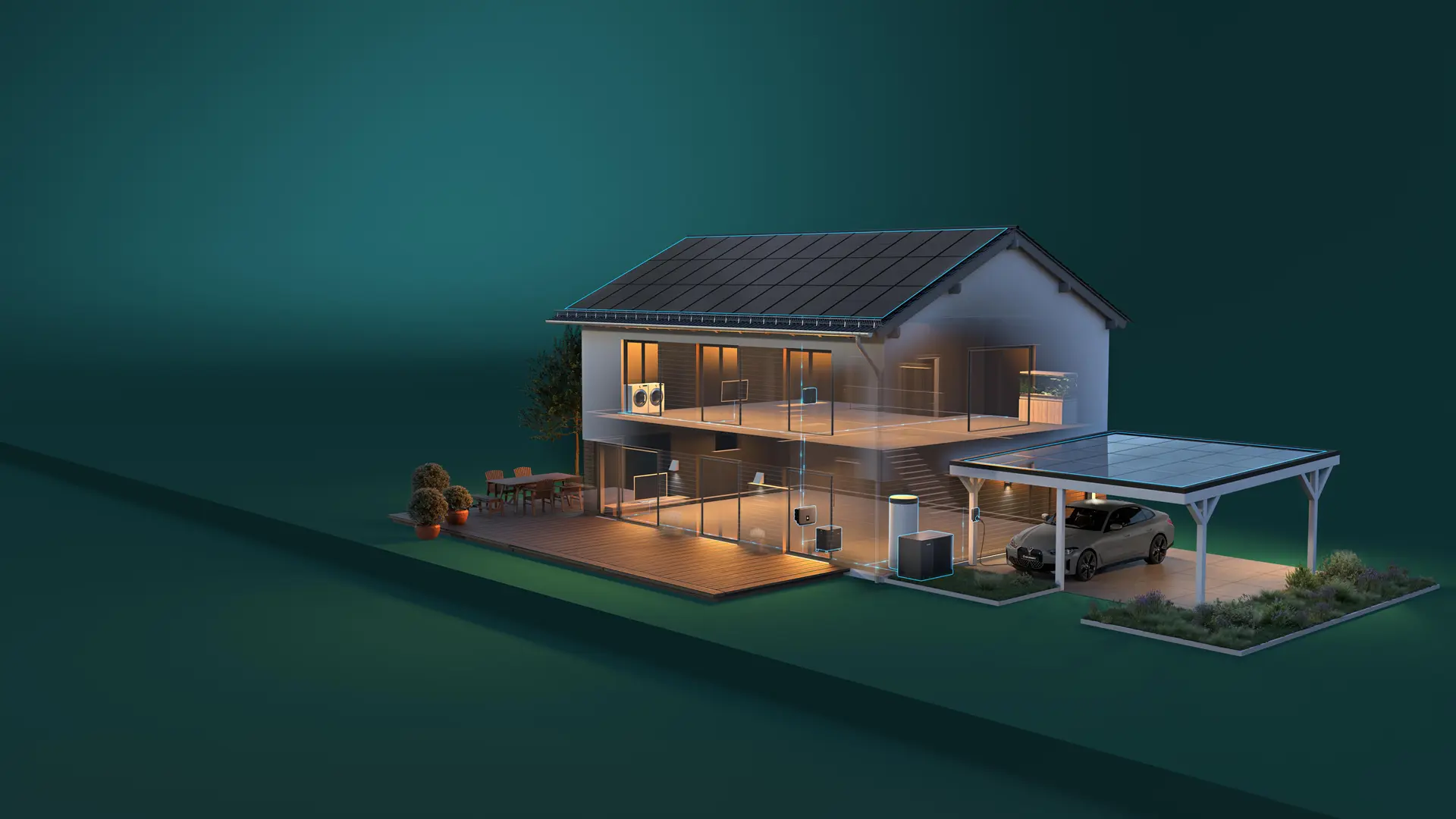
Photovoltaic systems are a great investment for homeowners and small businesses. Reliable electricity yields can be achieved with relatively modest investments. Homeowners or businesses usually have enough space to install a system on their own roof or somewhere else on the property, and official approval usually isn’t required to install a solar panel system. There are so many good reasons to switch to clean electricity.
SOLARWATT Home is our complete system offering, incorporating quality SOLARWATT hardware with a Home Energy Management System (HEMS). This connects and optimises the consumption of household devices (such as your EV Charger or heat pump) based on generation from your solar modules as well as current grid electricity prices, letting you take control of your energy costs from the palm of your hand.
From solar energy to electricity
Rising electricity prices, climate change, pollution, energy security concerns: more and more people are turning to clean, sustainable energy sources such as solar energy to generate electricity. The capacity of photovoltaic systems installed today is now more than 400 times greater than it was 20 years ago. An interesting data point: In 2020 solar contributed 28% of the UKs total renewable energy generation, with 43% of the nation’s electricity met by renewable energy. As UK government has pledged to ban coal-fired energy generation in 2024, UK is forecast to exceed 500MWdc in 2022 with solar sector and to reach the annual gigawatt level well before the end of the decade.
Experts expect the pace of expansion to pick up significantly over the next two decades, particularly the market for photovoltaic systems in private homes. The proportion of solar energy is expected to grow to one third of all energy supply as part of the drive for CO₂-free energy.
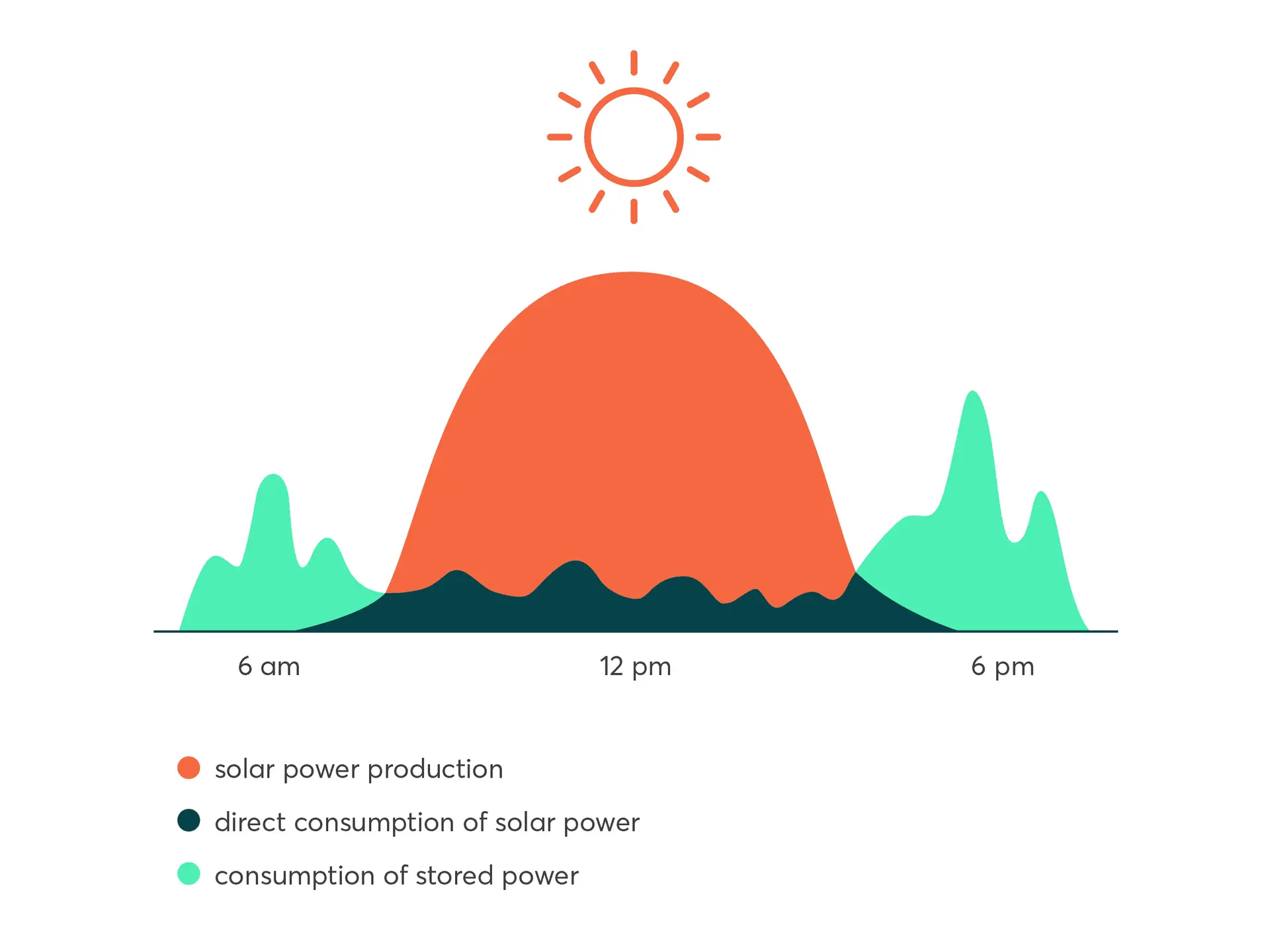
SOLARWATT Home:
Photovoltaic systems from Solarwatt
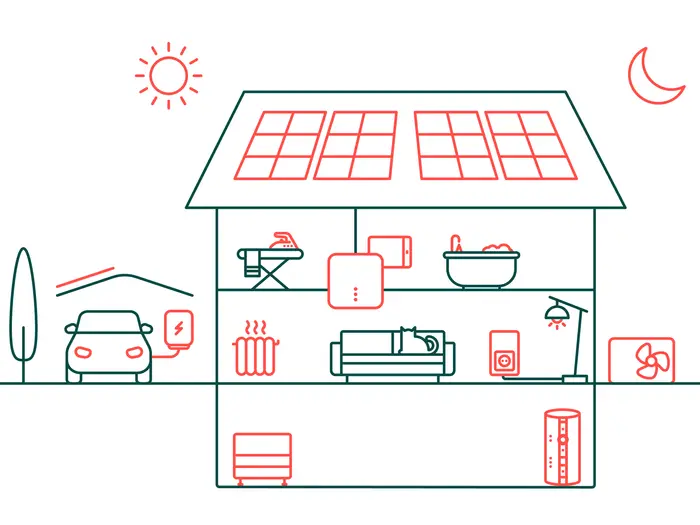
SOLARWATT Home:
Photovoltaic systems from Solarwatt
A photovoltaic system generates electricity from the sun’s energy. At the heart of every PV system you’ll find the solar modules, which are composed of interconnected solar cells. These cells convert the power of the sun into electricity.
An inverter converts the direct current generated by the solar modules into alternating current, which can then be used by household appliances. Aside from modules and inverters, a photovoltaic system also includes cables, electric connectors, meters for billing and also the substructure in the case of rooftop systems.
The system can be expanded to add features such as an energy management system or (additional) battery storage. The electricity from the roof can be used directly for heat generation (via a heat pump) or to support electromobility. All these additions work to maximise your own consumption of the solar power you generate, making your PV system more profitable.
How exactly does a photovoltaic system work?
A photovoltaic system generates electricity from the sun’s energy. At the heart of every PV system you’ll find the solar modules, which are composed of solar cells. These cells, which are made up of semiconductor layers with different conductivities, convert the energy of sunlight that lands on their surface into direct current. A single solar cell generates only a small amount of electricity by itself. When you combine a large number of cells to form modules, and modules into a system, useful electricity yields can be generated.
For solar power to be usable within the home, it must be converted to alternating current. This is where the inverter comes in. The inverter converts the solar energy you generate into alternating current so it can be used in the home. If there is insufficient demand to match the supply, the surplus can be fed into the public power grid in for payment based on an agreed feed-in tariff. Surplus energy can also be stored for use at another time, e.g., at night or in bad weather. In this case, an energy storage facility must be added to the system.
Is there a difference between a photovoltaic system, solar thermal panels, and solar panels?
Solar panels colloquially refer to any system that generates electricity (photovoltaic) and warmth (solar thermal energy) from the power of the sun’s rays. Colloquially, the terms photovoltaic system and solar panels are often used synonymously. In reality, solar thermal panels and photovoltaic panels generally compete for the available roof space. Which of the two usage types makes better economic sense must be decided on a case-by-case basis. The advantage of photovoltaics is that the solar power generated can be used for a wide variety of applications (electricity, heat, mobility).
What components make up a photovoltaic system?
The core components of any PV system are its photovoltaic modules. The better the quality, the higher and more reliable the yields over the longer term – which is what you get with the high-quality glass-glass modules from SOLARWATT.
The direct current that PV systems generate can’t usually be used without conversion. An inverter converts it into usable alternating current.
SOLARWATT Inverter vision is our high performance inverter, designed to work with our battery storage solution, SOLARWATT Battery vision. Designed in cooperation with the BMW Group, Inverter and Battery vision lets you convert & store self-generated solar power and electricity from the grid when the price is cheapest*, and keep key appliances online during a power cut.
*requires a smart "time-of-use" or half-hourly "dynamic" electricity price tariff.
The electricity meter in a photovoltaic system differs from a typical household electricity meter in that it can measure the flow of electricity in both directions, i.e., the electricity you purchase from the grid and the electricity you feed into the grid. This means a new meter is required for billing of the feed-in tariff.
Most private photovoltaic systems tend to be rooftop systems, where the modules are mounted a small distance above the roof on a substructure (a raised mount). Substructures must be of very high quality, because they must be able to withstand all weather conditions and support the weight of the modules.
In the case of in-roof systems, the modules are attached directly to the roof battens in place of traditional roof tiles. A substructure is not usually required here.
In a photovoltaic system, cables transfer power from the modules to the inverter. For proper operation, top-quality photovoltaic cables that are sufficiently robust to withstand external influences should be installed.

Types of photovoltaic systems
The majority of privately used photovoltaic systems are installed as on-roof systems on a pitched roof. This means that a mount is placed in parallel to the surface of a sloping roof (also called a substructure). The modules are then attached on top. The modules are basically thick-film modules (glass-foil modules or glass-glass modules), in which the cells, which are themselves connected with solder ribbon, are welded between two foils and protected by glass and a stable frame. The less expensive but less effective thin-film modules, whereby the photovoltaic semiconductors are deposited directly onto a thin carrier layer, are used primarily in large-scale commercial settings, such as solar farms. In these environments, the modules are usually elevated off the ground.
Elevating the modules also make it possible to mount photovoltaics on flat roofs. The angle of installation (which corresponds to the roof pitch and orientation of the PV system) can be set up in almost any way in this scenario. One restriction when installing solar modules on flat roofs is how the modules cast shadows on each other. This can be avoided by using a less extreme angle (or pitch), an alternating arrangement, and wider spacing.
With in-roof systems, the solar modules are integrated directly into the cladding of the pitched roof. This means that some of the tiles are replaced with modules This is particularly worth considering as part of a roof renovation, as it can save a lot in construction costs. It is also possible to use special solar roof tiles. For solar carports or solar terraces, the roof is usually made entirely from the modules. These rest on a stable substructure.
Modules don’t have to be installed on the roof – they can also be installed on facades. However, it should be noted that the output of facade systems is usually lower than that of roof systems with the same surface area.
In-roof and facade systems, and roof structures made up of solar modules, are sometimes referred to as building-integrated photovoltaics.
How big should your PV system be?
The design of a PV system depends on many factors. Key considerations include the household’s annual power consumption and the roof area available. The amount of electricity that can be generated also depends on the output of the modules used.
As a rule of thumb, the output of the system (e.g., 5 kWp) should theoretically cover the annual electricity consumption (e.g., 5,000 kWh). The assumption is that about 1,000 kWh of solar power can be generated per year from a system with 1 kWp (Kilowatt peak) system output. However, solar power can’t supply all the required electricity in this scenario as electricity is usually generated when consumption is low and vice versa. Typically, the self-consumption rate of a household with a photovoltaic system (without any battery storage system) is 20 to 30 percent.
The choice of solar modules plays a major role in determining the expected yield. If only a limited area is available, it is recommended to use especially powerful modules to get the most out of the roof space.
The somewhat less expensive polycrystalline modules (blue in colour) have now been almost completely superseded by more powerful monocrystalline modules. Newer developments such as TOPCon cells with particularly high efficiency or half-cell modules carry this trend forward.
Where the feed-in tariff – the money paid for energy fed into the grid – is low, it’s worth asking whether it is really worth designing your photovoltaic system to be as large as possible, because only small yields can be generated on the surplus. This is a valid point, but with increasing sector coupling, i.e., using electricity for electromobility and heat generation, the demand for electricity continues to rise. That means it can be increasingly worthwhile to make the most out of all available roof space and fill it with the maximum possible number of modules. The average size of photovoltaic systems for households has grown in recent years. The general maximum output these days tends to be around 10 kWp.
Plan your photovoltaic system: What to consider:
You should clarify the following points in the early stages of planning: Is your property suitable for the installation of solar modules (the Global Solar Atlas is a useful source), and what financing or subsidies are available?
Our experienced and reliable partner will gather some initial insights into your property and will also confirm what is possible in line with structural requirements. Our partner will offer comprehensive advice and answer any questions you may have.
You will receive a personalised quote shortly after your on-site appointment with a SOLARWATT Partner.
Check the quote is correct and contains everything it needs to.
Our partner will arrange the installation date with you as soon as you have placed the order. The system is handed over to you following completion and a thorough inspection with a formal inspection report. On the day of the handover, you will be given a detailed briefing on the system and how to use it, so you can get started and will know how everything works.
Solar power systems need regular maintenance.
Our tip: Set up a maintenance agreement with our local partner. That will ensure you do not have to keep track of maintenance intervals and will always have a contact to take care of things.
Generating your own solar power – what to look out for
Certain structural requirements must be met before a photovoltaic system can be installed. We especially recommend a static check if you have an older roof, to ensure the structure can take the expected load. If there is any doubt, it is better to renovate the roof now, before installing the PV system, in order to avoid higher costs later on. This especially applies if asbestos was used in the roof: it is usually not possible to install a photovoltaic system on an asbestos roof. Exceptions are usually only possible in cases of “disproportionate hardship”. But even then, most installers will refuse to install a system on roofs that contain asbestos, anyway.
If the roof looks like it is suitable for a photovoltaic system, the next step is to create a detailed plan. The key factors that determine the anticipated yield of solar energy are the roof orientation, the roof pitch, and the size and condition of the roof surface. A roof with many windows or dormers will have a reduced area that can be used for photovoltaics. This means that the solar energy yield will be significantly lower compared to a roof without such features.
Ideally, a PV system should be oriented to the south or southwest to achieve the highest possible solar energy yields. However, systems on an east-west roof also deliver good yields. The investment costs are usually somewhat higher in this case, because the two subsystems will each feed power in via their own inverter. One advantage is how this smoothes the typical yield curve, where solar energy generation usually peaks at midday.
A roof pitch between 20° and 30° is considered ideal for generating solar electricity. On flat roofs, the solar modules are mounted (“elevated”) on metal frames, while on pitched roofs, the modules are mounted parallel to the roof surface. If the pitch of the roof falls outside the ideal range, it may be necessary to install more modules to achieve the same output.
Contrary to what many would think, despite its reputation for having grey and cloudy weather, the UK has more than enough sunlight to power SOLARWATT solar panels. Naturally, depending on weather more energy can be expected to yield but good yields of 1,000 kWh per year and kWp system output can be expected in most cases.
Shade coverage can lead to a great reduction in the performance of a photovoltaic system in some unfortunate cases. Since the modules are generally connected in series, the amount of electricity generated is determined by the module with the lowest output. This means that even small areas of shade can have a detrimental effect.
It is therefore advisable to check the roof surface for possible shade issues ahead of installation. Future developments should also be taken into account, such as potential tree growth or the neighbours’ expansion plans. The newer half-cell modules have the advantage that their design significantly reduces the loss of yield that otherwise results from shade cover.
Solar cables must be laid from the roof to the basement or utility room in order to connect the photovoltaic system to the inverter, and then the inverter to the grid. This may demand extensive construction work, including making holes in the ceilings. It’s wise to carefully consider where the inverter and electricity storage system should be placed.
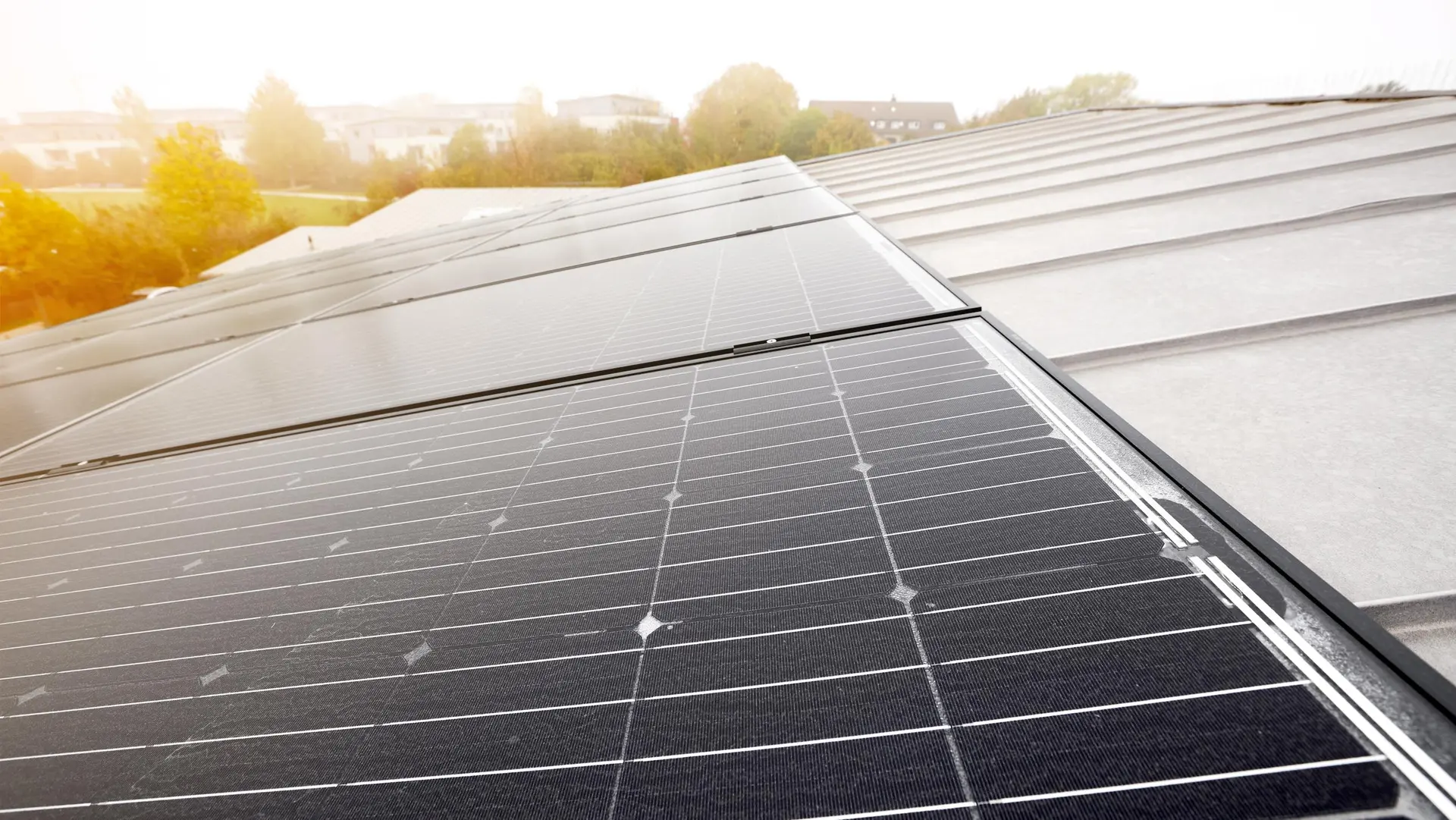
Costs and financing for a photovoltaic system
Does installing a PV system make financial sense?
Like any investment, purchasing a PV system is only worthwhile if costs can be recovered within a reasonable period of time. In other words, it should pay off financially.
You’ll need a few things to figure out if the investment is worthwhile:
- the cost of the photovoltaic system (costs)
- the anticipated annual electricity output (yield)
- the cost of grid electricity (electricity price)
- the fee received for electricity sold to the grid (feed-in tariff)
You should define the period over which you will want to write off your initial investment (amortisation period). People usually choose ten years.
Using your own energy makes sense.
The big difference between the costs of energy generation and grid electricity costs suggests that the highest profit can be achieved by maximising self-consumption. It’s sensible to use as much of the electricity you generate as possible yourself rather than buying in electricity from the grid. This can be achieved through smart energy management, using an electricity storage system, and converting electricity into heat and mobility (sector coupling).
Aside from the financial benefits of self-consumption, many PV users have a desire for self-sufficiency – independence from the grid operator and stability in the face of changing market conditions. Your self-sufficiency is calculated as follows:
The solar electricity you consume yourself (self-consumption) : Electricity required per year = Self-sufficiency rate
In photovoltaic systems without storage, it is usually possible to achieve a self-sufficiency rate between 30 and 40%; in systems with storage, self-sufficiency rates between 60 and 80% are possible.
Expert partners in your area

Expert partners in your area
The assembly and installation of a photovoltaic system should only be carried out by specialists. Our expert partners in your area will be happy to help.
Installing a solar panel system
The photovoltaic systems are installed using a substructure that sits on the existing roof covering. These on-roof systems are particularly suitable for existing properties to be retrofitted with photovoltaics. The modules are mounted a small distance above the roof tiles, although it is essential to ensure sufficient air circulation behind the modules (“rear ventilation”). This ensures that the modules do not get too warm even at high temperatures in summer and work efficiently.
On tiled roofs, hooks are screwed into the rafters in order to install the substructure. The installer then mounts rails on the hooks, to which the solar modules are fixed. Depending on the type of module, these can be screwed in, hung on, or even fastened with staples. Special care must be taken during installation to avoid damaging roof tiles or insulation. In-roof systems are an alternative to conventional rooftop solar panels.
Sustaining performance with well-maintained systems
Despite the low maintenance requirements of PV systems, maintenance should not be overlooked entirely. A photovoltaic system consists of various components. These are exposed to external influences to differing degrees and have different useful lives. Solar modules are especially low maintenance. Solarwatt’s high-quality glass-glass modules are durable and extremely robust against weather influences. Cabling and inverters are a more likely area where a fault can develop, although such issues can be quickly remedied by regular maintenance.
Expanding your photovoltaic system
Optimise your consumption of the electricity you generate
What does it mean to optimise self-consumption? The central idea is to maximise your use of the solar power you generate within your own household. The more free solar energy the household generating it consumes, the less that household will need to buy in at an expensive rate from the grid.
How can you maximise self-consumption?
Combine your PV system with an electricity storage system or use the solar electricity for heat generation or electric mobility. A high level of self-consumption ensures a lower energy bill while also increasing your independence.
Does it make sense to install a storage system?
The low level of remuneration paid for photovoltaic electricity fed into the public grid (the feed-in tariff) makes it increasingly worthwhile to find ways to consume your free solar electricity yourself. An electricity storage system, also referred to as solar power storage, ensures that the solar energy is always available when it is needed. This means the solar power you store is available day and night. As the operator of this system, this reduces your need for expensive grid electricity. In turn, this reduces your overall energy costs while increasing your independence.
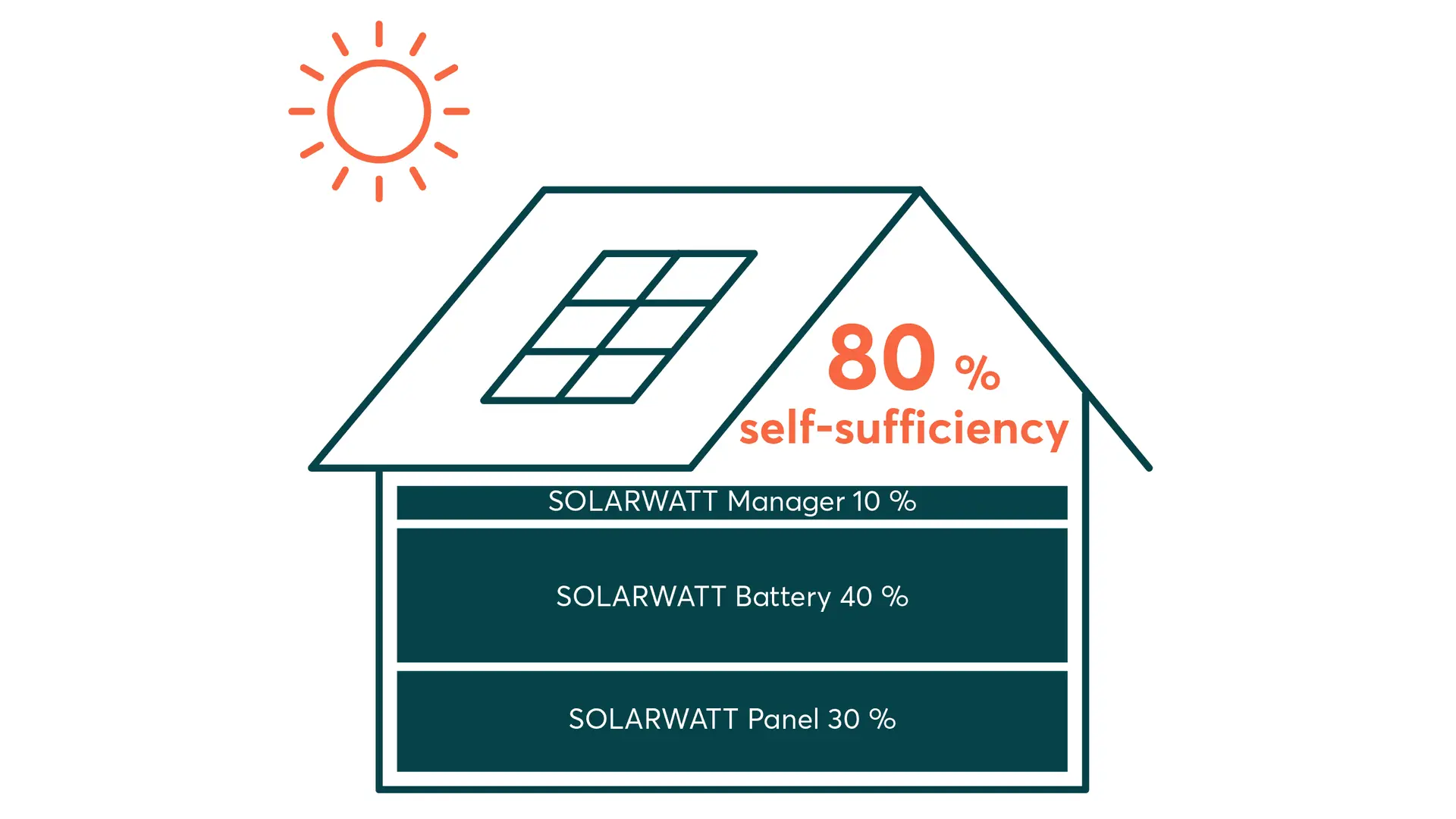
Are solar panels actually good for the environment?
People often ask whether PV systems actually generate as much energy as is needed to manufacture them. To put it simply, they do. This was studied by German research institute Fraunhofer ISE. The researchers found that the energy payback time – i.e., the time it takes to generate the energy invested in manufacturing the systems – is about one year.
The harvest factor of a photovoltaic system – i.e., the energy produced over its lifetime in relation to the energy used for its production – is about 20. The carbon footprint of photovoltaic electricity is better than that found in the average German electricity mix by a factor of 13.
